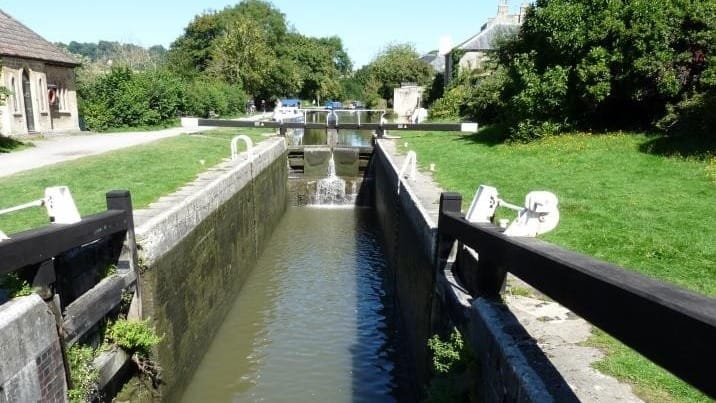Found drowned - Francis Herbert Bailey (1869-1884)
The story of Francis Herbert Bailey (1869-1884 who was found drowned at Sydney Lock,

Francis Herbert Bailey was born in Wingfield, south of Bradford upon Avon, in the summer of 1869. His father, Thomas, was a master carpenter, and his mother Ann was the daughter of an agricultural labourer. Francis had two older brothers, Albert and Charles.
Some time between 1871 and 1881 the family moved to No 3 Castle View, near to Sydney Wharf in Bath. On the night of the 1881 census, however, 11 year old Francis was staying with his uncle and aunt, Edward and Hannah Moore, at Belle Cour Farm in Wingfield. Francis took an apprenticeship with a Bath grocer, Mr William Adams, of 4 Argyle Street, some time around September 1883 or before. He was described as quiet and attentive to his duties.
Francis went missing on Saturday the 1st of March 1884. Frederick Kite, 22, from Fry’s Belleview, was a porter at Mr Adams’ grocers, and had known Francis for six months. Frederick said that Francis was of a rather reserved disposition, though cheerful when spoken to. He last saw Francis at a quarter to two on the 1st of March, when he left the shop. Frederick said that he had no reason to suppose that Francis would do away with himself.
Francis left work to take a dinner break, and was last seen soon afterwards by one of his brothers, near their house. When he failed to return to work, Mr Adams called at his house to find out where he was, but Francis was nowhere to be found. That evening William Wheeler, a boatman who lived at Bankside Cottage, Dolmeads, was passing along the canal side at Sydney Lock with his son. The little boy drew his father’s attention to something on the lock beam. It was a coat. There was no obvious explanation for its presence there.
On the following Tuesday Francis’s uncle Edward brought the case of his nephew’s disappearance before the Bath Bench. The Western Daily Press reported the matter on March 5th:
Yesterday morning at the City Police Court an application was made to the Bench with reference to a boy who had been missing since Saturday afternoon. He was 15 years of age, son of Mr Thomas Bailey, of 3 Castle View, Westmoreland, Bath. When last seen he was wearing a brown overcoat. The presiding magistrate asked the press to take notice of the application.
Almost two weeks passed, until, on Tuesday March 18th, lock keeper David Mizen, who lived at Lock Cottage, found a body in the lock. David reported it to Widcombe Police Station and at about 11am he helped to haul the body out of the canal. Police Constable North removed the body to the police station to await the inquest. He remarked at the inquest that the boy’s legs had been severely compressed from being trapped under the lock gates. During the morning Francis’s body was formally identified.
An inquest was held at the Guildhall on the evening of March 19th, the city coroner was Mr English. Francis’s mother, Ann Bailey, said that Francis was cheerful, and as to his general habits, that he was “all that she could wish him to be”. She mentioned that the night before Francis disappeared his father had had an accident which confined him to his bed, but Francis’s mood had not been unduly affected by this.
Mr E C Hopkins, MRCS, described the post mortem appearance, and said death might have been caused by suffocation by the body falling into mud or drowning. The jury returned an open verdict of “Found drowned”.
A week later, on March 27th 1884, a letter from S Smith was published in the Bath Chronicle, decrying the safety of the canal bank in the area. Mr Smith, who lived in the vicinity, stated that that the tragedy of Francis’s death could have been avoided. He suspected that Francis had been tossed into the canal by the rope of a passing boat. Mr Smith had recently instigated a petition, signed by a great many residents (mainly ladies), requesting the building of a footpath along this particularly crooked, dark, and dirty stretch of canal bank, ‘from the iron bridge to the most awkward flight of steps’. Although a Councillor had agreed to present the petition to the Council, it appears that this was never achieved.
By 1891 Francis’s family had moved to Caledonian Road, Twerton.
Sources:
Bristol Mercury and Daily Post, Thursday March 20th 1884.
Devizes and Wiltshire Gazette, Thursday March 20th 1884.
Bath Chronicle, Thursday March 27th 1884.
